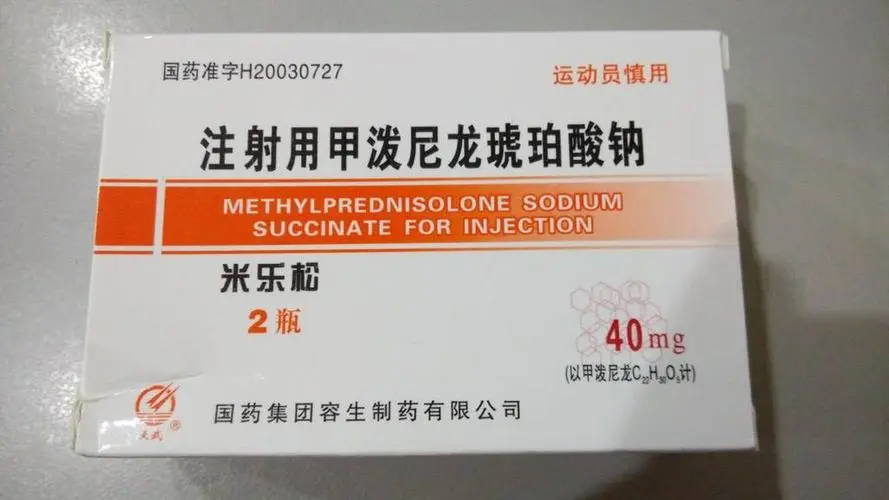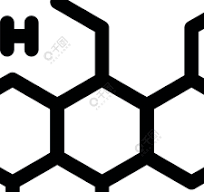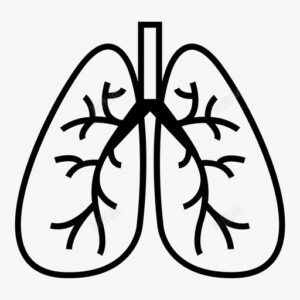Methylprednisolone Sodium Succinate for Injection
Effects and efficacy:
The oral preparation and injection of this product can be used to treat the following diseases in adults and children. Rheumatic diseases As a short-term auxiliary drug, it helps patients get through the acute or critical stage of the following diseases: post-traumatic osteoarthritis, synovitis caused by osteoarthritis, rheumatoid arthritis (including juvenile rheumatoid arthritis), acute or subacute bursitis, epicondylitis, acute nonspecific tenosynovitis, acute gouty arthritis, psoriatic arthritis, ankylosing spondylitis. Collagen diseases are used for the critical stage or maintenance treatment of the following diseases: systemic lupus erythematosus (and lupus nephritis), acute rheumatic myocarditis, systemic dermatomyositis (polymyositis), polyarteritis nodosa, Goodpasture’s hemorrhagic nephritis syndrome, polymyalgia rheumatica, giant cell arthritis. Skin diseases Treat pemphigus, severe erythema multiforme (Stevens-Johnson syndrome), exfoliative dermatitis, bullous herpetic dermatitis, severe seborrheic dermatitis, severe psoriasis, mycosis fungoides, and urticaria. Allergic conditions are used to control the following severe or functionally impairing allergic diseases that are difficult to treat with conventional therapy: bronchial asthma, contact dermatitis, atopic dermatitis, serum sickness, seasonal or year-round allergic rhinitis, drug allergic reactions, urticarial transfusion reactions, acute non-infectious laryngeal edema. Eye diseases treat severe acute and chronic eye allergies and inflammations, such as herpes zoster ophthalmicus, iritis, iridocyclitis, chorioretinitis, diffuse posterior uveitis and choroiditis, optic neuritis, sympathetic ophthalmia, allergic corneal marginal ulcers, anterior retinitis, allergic conjunctivitis, keratitis. Gastrointestinal diseases help patients through the critical stages of the following diseases: ulcerative colitis (systemic treatment), regional ileitis (systemic treatment). Respiratory diseases treat pulmonary sarcoidosis, beryllium poisoning, combined with appropriate anti-tuberculosis chemotherapy for fulminant or diffuse pulmonary tuberculosis, Loeffler syndrome that cannot be controlled by other methods, and aspiration pneumonia. Edema: It is used for diuresis and relief of proteinuria in spontaneous or lupus nephrotic syndrome without uremia. It is used for immunosuppressive therapy in organ transplantation. It is used for acquired (autoimmune) hemolytic anemia, spontaneous thrombocytopenic purpura in adults, secondary thrombocytopenia in adults, erythroblastopenia (erythrocyte anemia), and congenital (erythrocyte) aplastic anemia. It is used for palliative treatment of the following diseases in tumors: adult leukemia and lymphoma, and acute leukemia in children. Shock: It is suitable for shock induced by adrenal insufficiency, or shock that is unresponsive to conventional treatment due to adrenal insufficiency (hydrocortisone is a commonly used drug; if mineralocorticoid activity is not desired, this drug can be used), such as hemorrhagic, traumatic, and surgical shock that is unresponsive to conventional treatment. Endocrine disorders are suitable for primary or secondary adrenal insufficiency, acute adrenal insufficiency (hydrocortisone or cortisone is the first choice for the above diseases, and synthetic glucocorticoids and mineralocorticoids can be used in combination when necessary), congenital adrenal hyperplasia, non-suppurative thyroiditis, and hypercalcemia caused by cancer. Others: Nervous system: cerebral edema caused by primary or metastatic tumors and (or) surgery and radiotherapy, acute critical stage of multiple sclerosis, acute spinal cord injury (treatment should be started within 8 hours after trauma); combined with appropriate anti-tuberculosis chemotherapy for tuberculous meningitis with subarachnoid obstruction or tendency to obstruction; trichinosis involving nerves or myocardium; prevention of nausea and vomiting caused by cancer chemotherapy.
Dosage and administration:
General use of oral preparations: The initial dose is 4~48mg per day, and the specific dosage can be determined according to the type of disease and condition. If the clinical effect is unsatisfactory after adequate treatment, the drug should be discontinued and other therapies should be used instead. When the drug needs to be discontinued after long-term treatment, it is recommended to reduce the dose gradually and not to withdraw the drug suddenly. When clinical symptoms improve, the initial dose should be reduced gradually within an appropriate period of time until the lowest effective maintenance dose is reached. Please follow the doctor’s advice for details. Organ transplantation: Oral administration 7mg/kg per day. Please follow the doctor’s advice for details. Brain edema: 200~1000mg per day. Please follow the doctor’s advice for details. Multiple sclerosis: 200mg per day. Please follow the doctor’s advice for details. The initial dose of injection (adult) is 10~500mg. If the initial dose is less than or equal to 250mg, it should be injected for at least 5 minutes; if the initial dose is greater than 250mg, it should be injected for at least 30 minutes. Depending on the patient’s response and clinical needs, the next dose can be given after a period of time. 1g per day, for 1~4 consecutive days; or 1g per month, for 6 months. Each injection should last at least 30 minutes. If the condition does not improve within 1 week after treatment, or if necessary, this treatment plan can be repeated. The initial dose is 30 mg/kg, injected intravenously over 15 minutes, and used within 8 hours after injury. Intravenous injection of large doses of this drug in a short period of time (giving more than 500 mg of this drug in less than 10 minutes) may cause arrhythmia, shock, and cardiac arrest. After a large dose injection, it should be paused for 45 minutes, followed by continuous intravenous drip at a rate of 5.4 mg/(kg·h) for 23 hours (treatment within 3 hours after injury) or 47 hours (treatment within 3 to 8 hours after injury), and the infusion pump should be placed at a different injection site from the large dose injection. Large injections at this rate are only given for this indication. Mild to moderate vomiting: 250 mg once, injected over at least 5 minutes, administered 1 hour before chemotherapy, at the beginning of chemotherapy, and after the end of chemotherapy. Chlorinated phenothiazine can be given at the same time as the first dose to enhance the effect. Severe vomiting: 250 mg once, injected over at least 5 minutes, administered 1 hour before chemotherapy, and an appropriate amount of metoclopramide or butyrophenone drugs are given at the same time. Then, inject once at the beginning of chemotherapy and once after the end of chemotherapy. The recommended dose is 30 mg/kg, injected over at least 30 minutes. Repeat every 4 to 6 hours within 48 hours, depending on clinical needs. 500 mg or 1000 mg a day for 3 consecutive days, repeat for 3 days the next week, and then gradually reduce the dose of oral or intravenous steroids. Usually, patients with more severe disease use a dose of 1000 mg, and patients with relative contraindications to steroids use a dose of 500 mg. The maximum cumulative dose is 10 g. Take the drug as soon as possible within 72 hours of treatment for Pneumocystis jiroveci pneumonia. On the 1st to 5th day, 30 mg once a day; on the 6th to 10th day, 30 mg once a day; on the 11th to 21st day, 15 mg once a day. 500 mg once a week for 6 weeks, then change to 250 mg once a week for 6 weeks. 1000 mg a day for 3 days. For patients with lighter weight, a dose of 10 to 15 mg/kg a day is often used. The usual dose is 60-125 mg once, 1-4 times a day, followed by oral treatment (such as 40 mg of prednisone once a day). The total course of treatment is 5-14 days, and a shorter course of treatment (5 days) is preferred. General use of injection (children) The dosage can be reduced for infants or children. The dosage should be determined not only based on age and body size, but also based on the severity of the disease and the patient’s response, but the daily dose should not be less than 0.5 mg/kg. For shock treatment of rapidly progressive idiopathic crescentic glomerulonephritis, 10 mg/kg a day for 6 consecutive days, followed by oral administration of prednisolone and cyclophosphamide for 8-12 weeks. Infants and young children with moderate to severe Pneumocystis jiroveci pneumonia: Use the drug as soon as possible within 72 hours of treatment of Pneumocystis jiroveci pneumonia. On the 1st to 7th day, 1 mg/kg once every 6 hours; on the 8th to 9th day, 1 mg/kg once twice a day; on the 10th to 11th day, 0.5 mg/kg once twice a day; on the 12th to 16th day, 1 mg/kg once a day. Adolescents: Usage and dosage are the same as adults.
Adverse reactions:
Common adverse reactions may occur after medication: infection, endocrine system abnormalities (such as Cushing’s syndrome); metabolic and nutritional disorders: such as metabolic acidosis, fluid retention, increased appetite, etc.; mental abnormalities: such as emotional instability, suicidal ideation, insomnia, etc.; nervous system abnormalities: such as convulsions, amnesia, dizziness, headaches; eye abnormalities: such as retinopathy, blurred vision; heart abnormalities: such as arrhythmia, heart failure; vascular abnormalities: such as hypertension, hypotension, thrombosis; gastrointestinal system abnormalities: such as abdominal distension, abdominal pain, diarrhea, nausea, vomiting; skin abnormalities: such as hirsutism, ecchymosis, rash, hyperhidrosis; musculoskeletal abnormalities: such as growth retardation, osteoporosis; other side effects: menstrual disorders, decreased healing ability, edema, fatigue, etc. Serious and other important adverse reactions Hepatotoxicity: If toxic hepatitis occurs, intravenous administration of this drug should be stopped. Since re-administration may cause recurrence of toxic hepatitis, patients who have suffered toxic hepatitis caused by this drug should avoid high-dose intravenous administration of this drug. If Kaposi’s sarcoma occurs (often occurs with long-term medication), discontinuation of the medication may help clinical improvement. In addition, sudden discontinuation of the medication after long-term use may cause discomfort, mainly manifested as anorexia, nausea, vomiting, drowsiness, headache, fever, joint pain, desquamation, myalgia, weight loss and hypotension. If you need to stop the medication, please gradually reduce the dosage under the guidance of a doctor. Never stop the medication without authorization.
Drug contraindications:
Allergic to this product is prohibited. Use with caution during pregnancy. Use with caution during lactation. Use with caution for renal impairment. Use with caution for athletes.
Share:
Products
Our offers
Health Classification
Let us work together to protect precious health






























